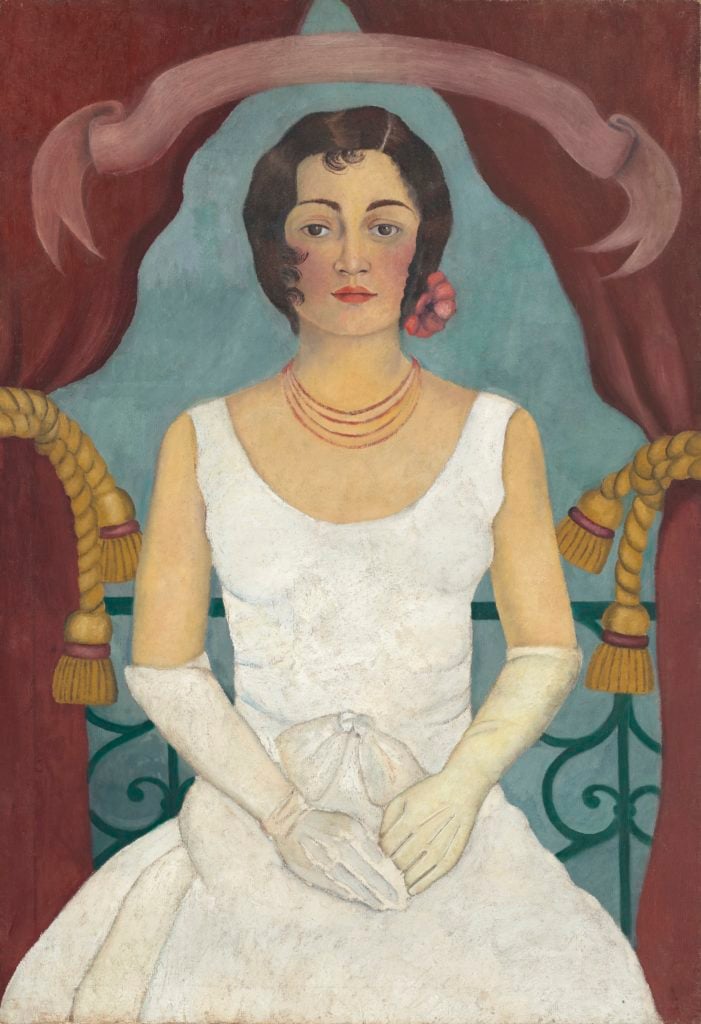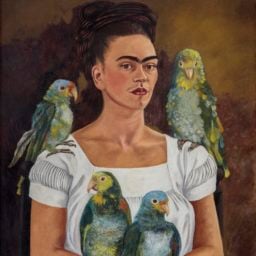Frida Kahlo’s Portrait of a Lady in White (c. 1929) sold for more than $5.8 million at Christie’s Latin American art sale in New York yesterday, making it the second-highest price ever achieved for the artist at auction. The work’s value had been estimated between $3 million and $5 million. Previously, her Dos Desnudos en el Bosque (La Tierra Misma) (1939) sold for over $8 million at Christie’s in 2016.
Thought to be painted about a year after her marriage to Diego Rivera, Portrait of a Lady in White is a rare oil-on-canvas made by Kahlo during this period. Some scholars believe it was made in Mexico, but it is possible that it was painted in San Francisco, when Rivera and Kahlo were living there in 1930.
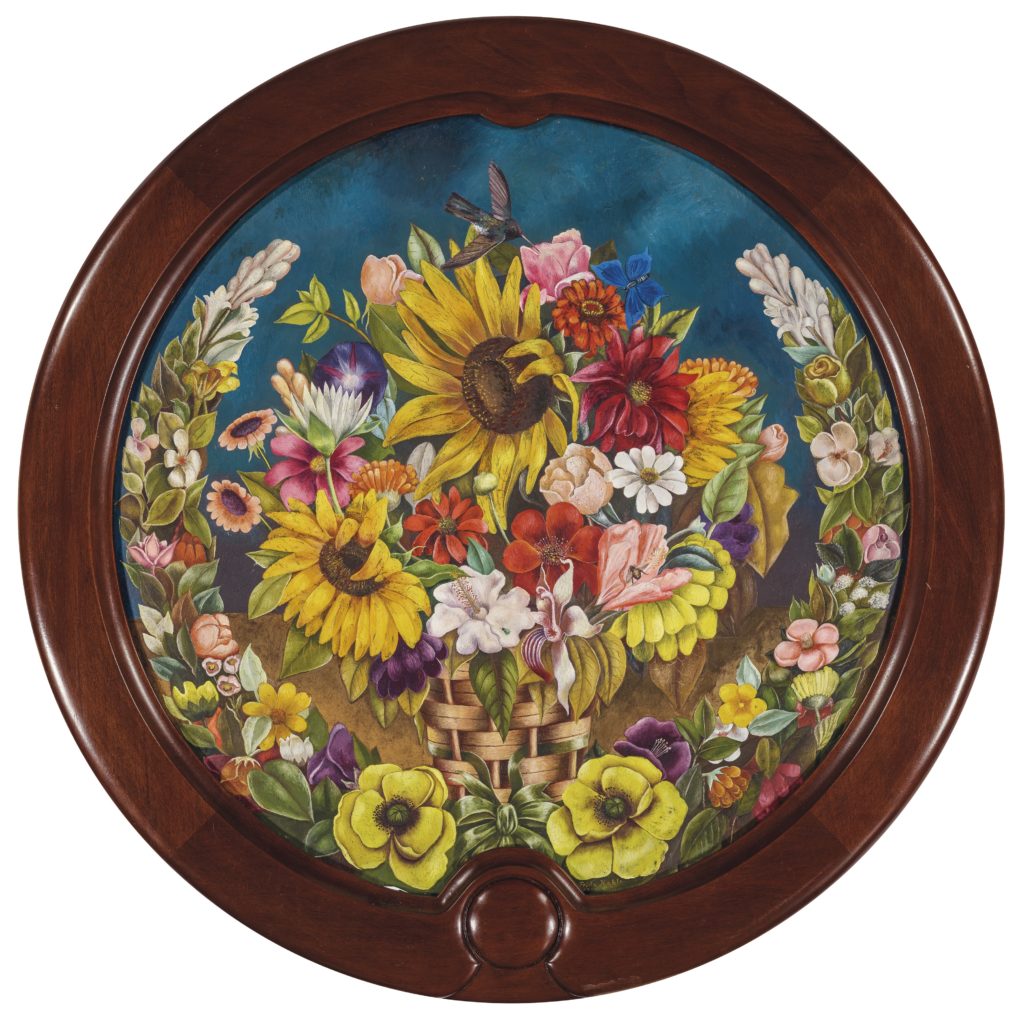
Frida Kahlo, The Flower Basket (1941). Courtesy of Christie’s Images Ltd.
It is also unclear who the subject of the portrait is, though there are a few theories. Because it is unfinished, some speculate that the portrait depicts one of Kahlo’s lovers, whom she had a falling out with; the relationship ended, and so did the painting. Two nephews of a woman named Dorothy (Brown) Fox came forward in 2014 and claimed that the painting was of their aunt. Others speculate that the woman might be a relative or friend of Ralph Stackpole, a sculptor who lived with Kahlo and Rivera in San Francisco.
Virgilio Garza, head of Christie’s Latin American Art department, posited to Forbes that he believed the painting to be Kahlo’s high school classmate Elena Boder.
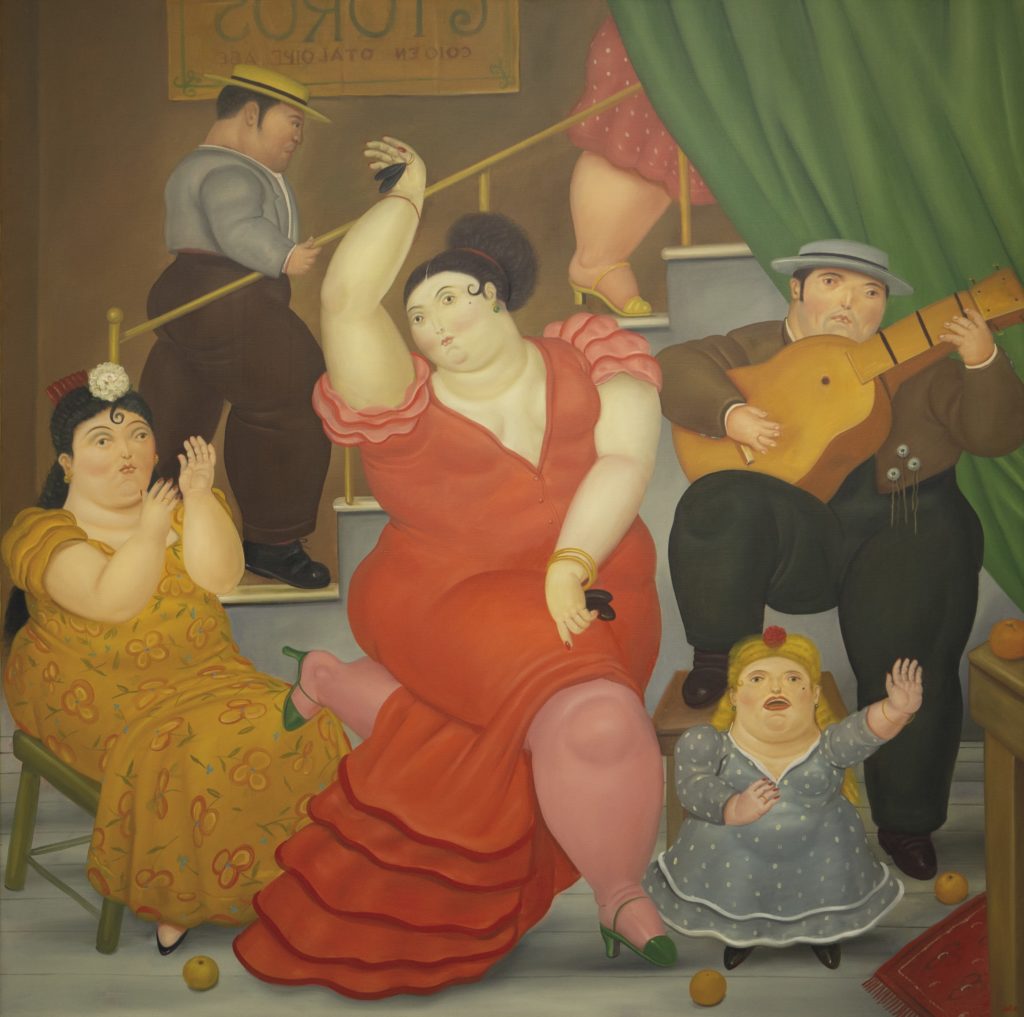
Fernando Botero, Tablao flamenco (1984). Courtesy of Christie’s Images Ltd.
The painting has changed hands a few times in its 90 years. Kahlo initially gifted it to photographer Lola Álvarez Bravo, the first Mexican female photographer and a major figure in the Mexican Renaissance of post-revolution art from the 1930s through the 1950s. Most recently it had been on loan to Stanford University from the collection of Dr. Helga Prignitz-Poda. Dr. Prignitz-Poda is an expert on Kahlo, having written several books on the artist, including Frida Kahlo (Prisma, 2013) and Hidden Frida Kahlo: Lost, Destroyed, or Little-Known Works (Prestel, 2017).
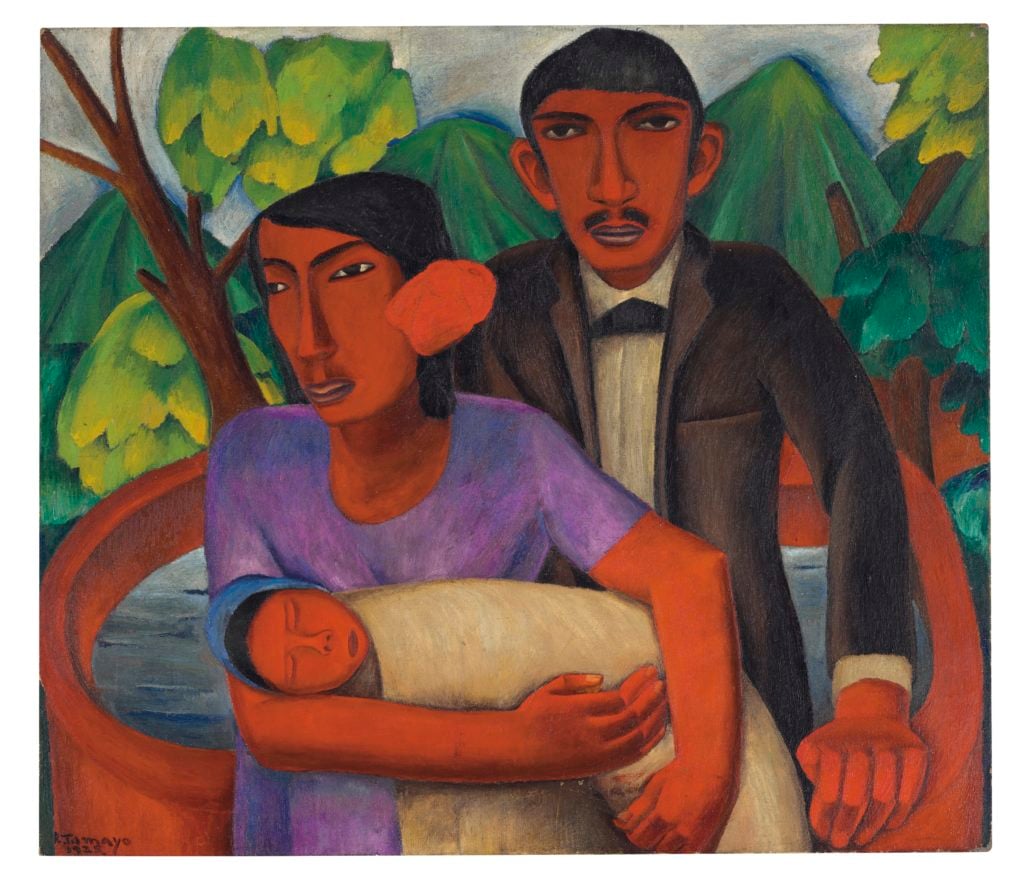
Rufino Tamayo, The Family (1925). Courtesy of Christie’s Images Ltd.
The Christie’s Latin American sale included a few other big-ticket acquisitions, including Fernando Botero’s Tablao flamenco (1984), which went for slightly above its high estimate of $2 million, and Rufino Tamayo’s The Family (1925), which sold well above its high estimate at nearly $1.2 million. Also in the sale was a 1935 watercolor and charcoal on canvas by Diego Rivera, which fetched $325,000. There was also another Kahlo highlight: a circular painting of flowers on copper called The Flower Basket (1941), from the James and Marilynn Alsdorf Collection, which sold for a little more than its low estimate of $3 million, at $3.1 million.
